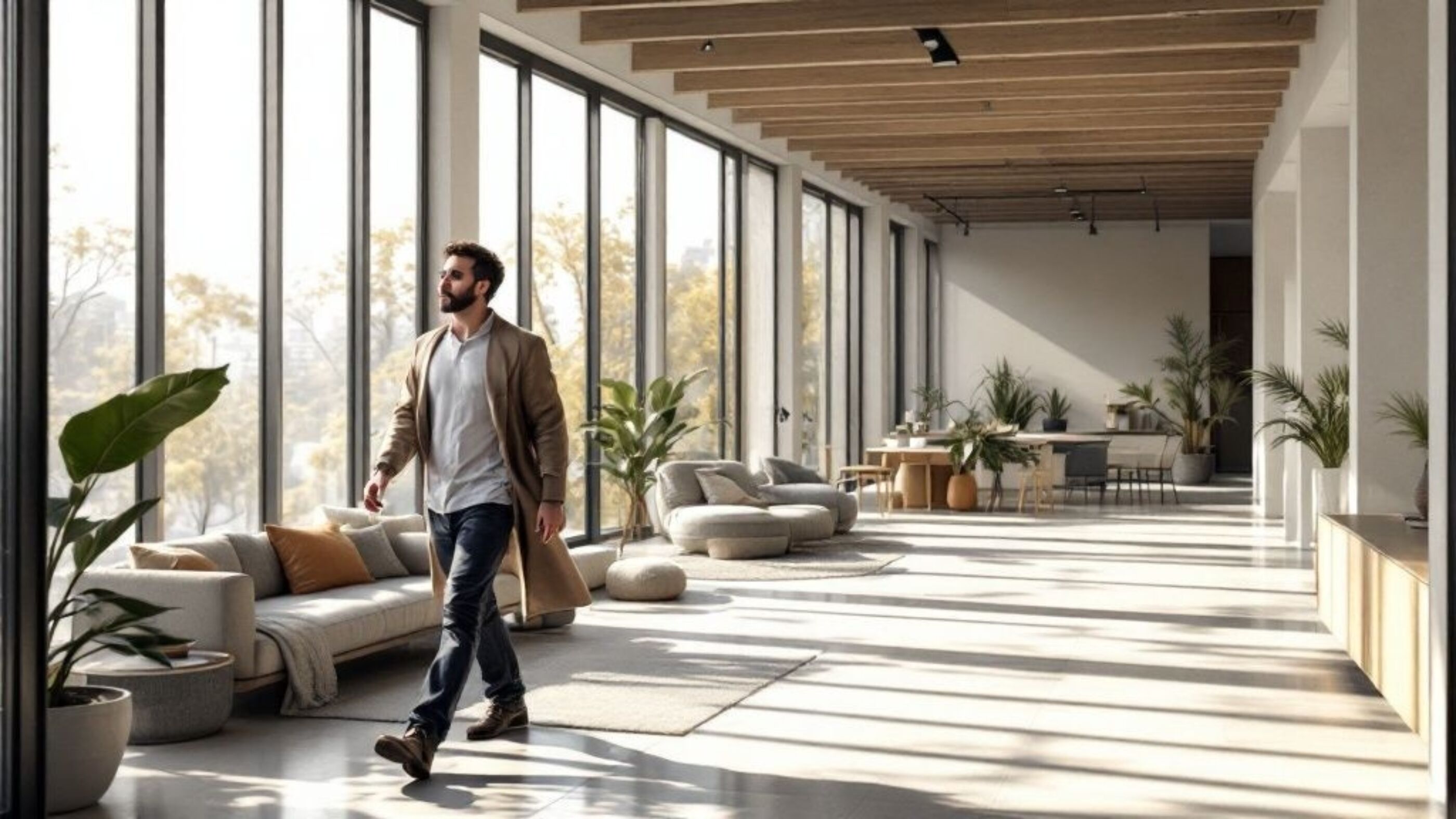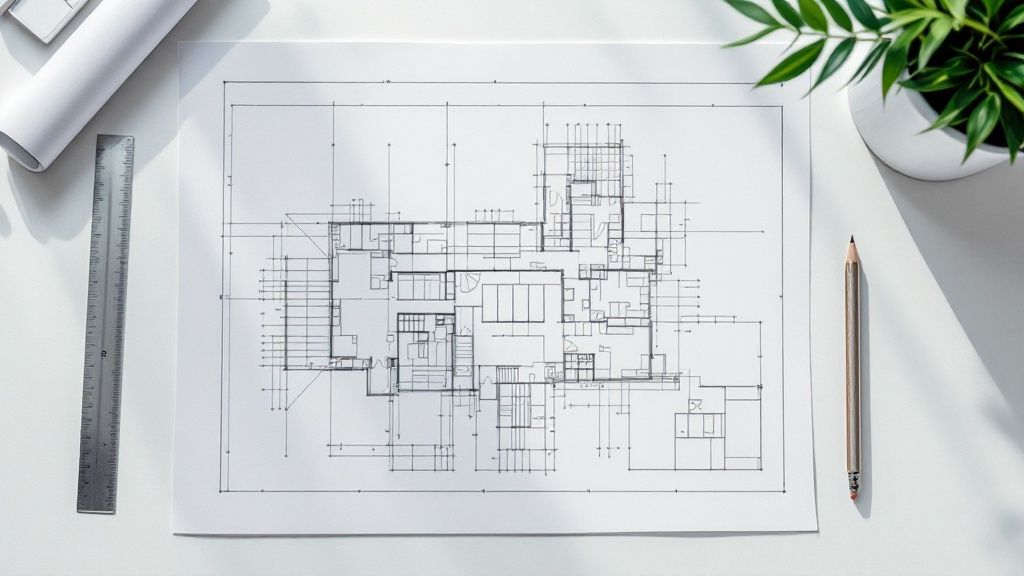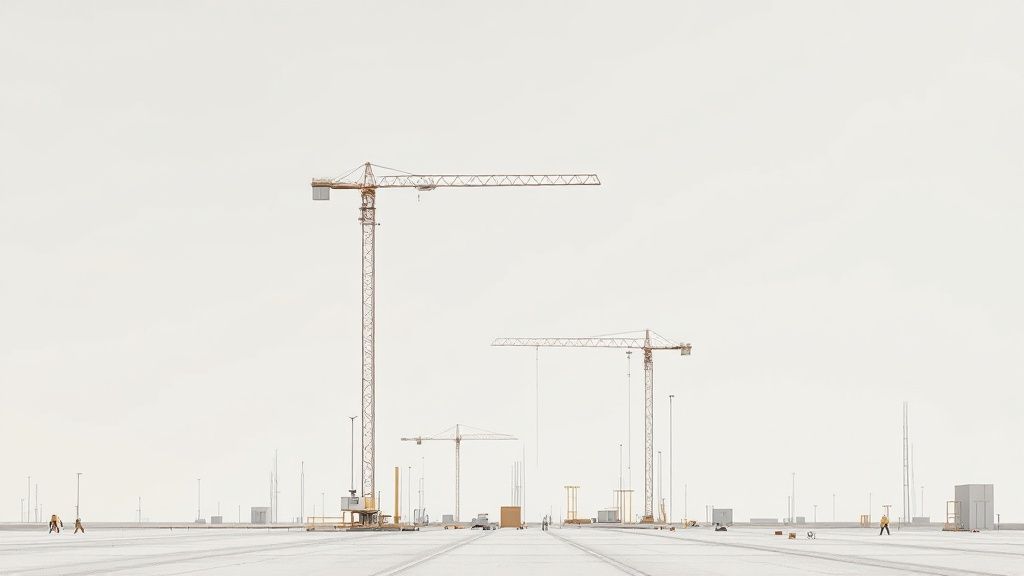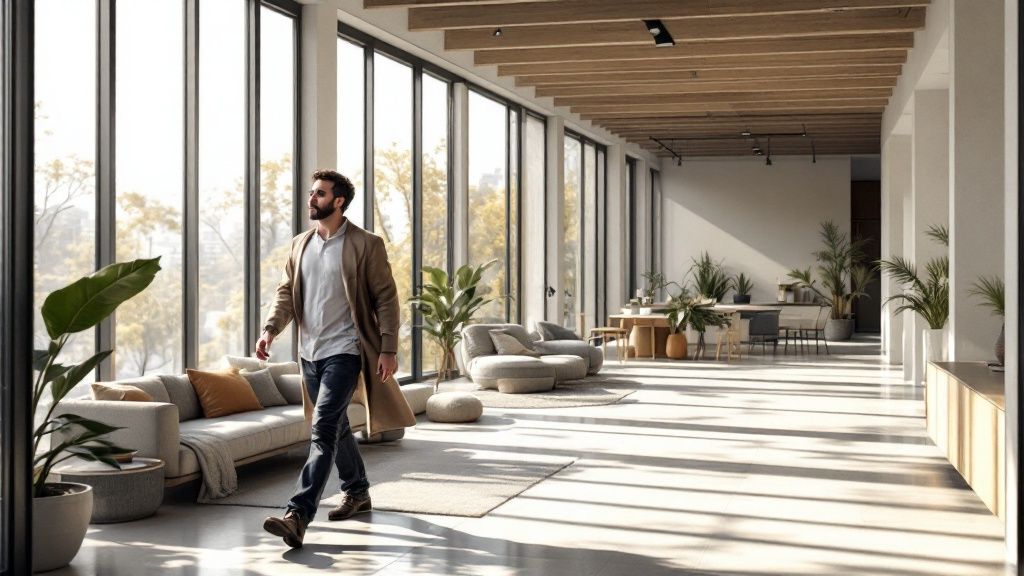Expert Design and Construct Solutions for Your Projects

The Australian Design and Construct Landscape

The Australian construction industry is increasingly adopting the design and construct model. This integrated approach combines design and construction under one company, simplifying project management. This contrasts sharply with traditional methods, where these phases are separate, often leading to miscommunication and budget overruns. This combined method is gaining popularity because of its many benefits for projects all over Australia.
Single-Point Responsibility and Accountability
A key advantage of design and construct is clear accountability. With a single entity managing both design and construction, responsibility is streamlined. This results in fewer disagreements and less blame-shifting if problems arise.
For instance, if a design issue is discovered during construction, the design and construct team handles it internally. This avoids the lengthy negotiations and blame games common in traditional models. This focused accountability ultimately benefits the client with increased efficiency and budget management.
Early Contractor Involvement
Early contractor involvement is a defining feature of the design and construct process. This early collaboration brings essential construction knowledge to the design stage. This allows for practical considerations about construction feasibility and cost-effectiveness from the beginning.
Furthermore, potential challenges can be identified and addressed before they become expensive problems during the building phase. This proactive strategy contributes to more accurate budgeting, realistic schedules, and a smoother construction process.
However, the Australian construction industry has its challenges. There's a distinct difference between public and private projects. Government-funded infrastructure is flourishing, with over 8,000 projects worth more than $500 billion. In contrast, private residential development is facing difficulties, such as high deferral rates, with 74% of builders and 62% of developers reporting delays in 2025. This is partly due to stricter lending practices and financial constraints. Learn more about the Australian construction outlook here: The Australian Construction Industry Outlook 2025
Strategic Risk Distribution and Collaboration
Effective design and construct implementation depends on strategic risk allocation. While the single entity holds overall responsibility, risks are distributed appropriately among the team, promoting a collaborative setting.
This cooperative environment improves communication and encourages creative problem-solving. This shared responsibility motivates everyone to strive for project success, creating a more efficient and productive project lifecycle. The design and construct model, therefore, offers a robust framework for achieving project goals on budget and on time in the diverse Australian market.
Maximizing Benefits While Navigating Challenges
Design and construct offers significant advantages in the Australian construction industry. It's important to understand both its potential and the challenges that come with it. This approach can provide compressed timelines and cost certainty, alongside opportunities for innovation not always possible with traditional methods. However, there are complexities in quality control, managing client expectations, and evaluating diverse tender submissions.
Measurable Benefits of Design and Construct
The design and construct method offers substantial benefits. The consolidated responsibility often results in faster project completion. Having a single point of contact simplifies communication and streamlines the decision-making process.
This integration also allows for more accurate cost projections early in the project. This helps minimize unexpected costs later on. These efficiencies are very attractive in Australia's competitive construction market.
Addressing the Challenges
While there are many benefits, design and construct also presents certain challenges. Managing quality control across both the design and construction phases requires robust systems.
Client expectations need to be carefully managed throughout the entire project lifecycle. This involves regular communication and transparent progress updates. Evaluating tenders can also be complex. Proposals can differ significantly in their design approach and technical specifications.
Strategies for Success in the Australian Context
Top Australian construction teams have developed successful strategies to overcome these challenges. Clear communication protocols are vital, supported by regular meetings and digital collaboration platforms like Microsoft Teams.
Robust quality assurance systems, implemented from the very beginning of the project, ensure design integrity throughout the construction process. These frameworks enhance communication and quality. They also promote better collaboration between the client and the design and construct team. For further project management insights, check out this resource: How to master your project management
The following infographic compares Concrete, Steel, and Timber across cost, lifespan, and CO₂ emissions.

As the infographic illustrates, timber offers a compelling balance of affordability, durability, and significantly lower carbon emissions compared to steel and concrete. This makes timber an increasingly popular choice for sustainable building practices in Australia.
To further understand the differences between approaches, let's look at a comparison table:
Design and Construct vs. Traditional Delivery Methods
This table compares key aspects of the design and construct approach against traditional delivery methods to highlight the differences in risk allocation, timeline impact, and stakeholder involvement.
Aspect | Design and Construct | Traditional (Design-Bid-Build) |
|---|---|---|
Risk Allocation | Primarily with the contractor | Distributed among designer, contractor, and owner |
Timeline | Generally faster due to overlapping design and construction | Typically longer with sequential phases |
Cost Certainty | Higher earlier in the project | Develops progressively, subject to bidding and change orders |
Stakeholder Involvement | Single point of contact (contractor) | Multiple points of contact (designer, contractor, subcontractors) |
Complexity of Tender Evaluation | More complex due to varied design solutions | Simpler, based primarily on price |
This table highlights the key differences between Design and Construct and Traditional methods. While Design and Construct offers benefits in speed and cost certainty, it requires more complex tender evaluations. Traditional methods offer simpler bidding but can lead to longer timelines and less cost certainty.
The Australian construction market is expected to see substantial growth. Projections indicate an increase of USD 42.1 billion and a CAGR of 3.5% between 2025 and 2029. Australian Construction Market Analysis provides a detailed statistical overview. This growth is driven by expanding urban populations and the increasing adoption of innovative construction techniques. By adopting these best practices, Australian construction firms can maximize the benefits of design and construct while effectively managing its inherent challenges. This allows them to deliver exceptional client outcomes and contribute to the evolving landscape of the construction industry.
Building Your Design and Construct Dream Team

The success of any design and construct project relies heavily on the team. It's not simply about individual skills, but about assembling the right blend of expertise and nurturing a collaborative atmosphere. This section explores how this delivery method reshapes traditional project relationships in Australia.
Defining Roles and Responsibilities
Design and construct projects require a shift in how we view the roles of clients, contractors, designers, and subcontractors. The collaborative nature demands clear definitions of each party's responsibilities from the very beginning.
This clarity minimizes confusion and builds a shared understanding of the project goals. For instance, the contractor assumes the primary leadership role, coordinating both the design and construction activities. The designer, working in close partnership with the contractor, ensures the project vision is realized while respecting practical construction limitations. Subcontractors, brought on board by the main contractor, execute specialized tasks within the established framework.
Governance and Collaboration: A Balancing Act
High-performing design and construct teams establish strong governance frameworks. These frameworks balance accountability with genuine collaboration. They often include regular progress meetings, clearly defined reporting procedures, and transparent communication channels.
This ensures all parties stay informed and are empowered to contribute their expertise effectively. For more information on structuring successful projects, check out our guide on project sections.
Early Contractor Engagement: Capturing Expertise
Engaging the contractor early in the design process is fundamental to design and construct. This allows for valuable input on constructability, cost-effectiveness, and potential risks from the outset.
This early involvement can result in more innovative solutions and prevent costly rework down the line. It also helps solidify realistic budgets and achievable timelines.
The Client's Evolving Role
In design and construct, the client's role changes throughout the project lifecycle. Initially, the client plays a critical role in developing a comprehensive project brief, articulating their vision, and setting clear expectations.
As the project progresses, the client transitions to a more supervisory role, providing feedback and maintaining appropriate oversight without micromanaging. This allows the design and construct team to operate efficiently while still ensuring the client's needs are met. This collaborative approach ultimately leads to more successful projects, delivering exceptional outcomes for everyone involved. Through effective teamwork and communication, design and construct offers a strong pathway to realizing project visions in the Australian construction landscape.
Integrating Sustainability Into Design and Construct
Sustainability is reshaping Australia's design and construction industry. It's no longer a desirable addition but a core requirement for responsible projects. This shift prioritizes Environmental, Social, and Governance (ESG) factors, influencing every stage from concept to completion.
The Rise of ESG in Australian Projects
ESG considerations are transforming project outcomes across the country. This involves assessing a project's environmental effects, social impact, and ethical governance. It's more than simply adhering to regulations.
Minimizing a project's carbon footprint is a crucial environmental goal. Socially, projects should benefit local communities, potentially by sourcing from local suppliers or creating jobs. Robust governance ensures transparency and accountability from start to finish. Together, these elements drive sustainable practices and create lasting value.
Practical Approaches to Sustainable Design
Integrating sustainability into design and construction requires a practical approach. This includes using eco-friendly materials like recycled timber or low-impact concrete. It also means incorporating energy-efficient systems such as solar panels and rainwater harvesting.
Reducing embodied carbon – the emissions from material production and transport – is also increasingly critical. Although these strategies might increase initial project costs, they often lead to long-term savings through reduced energy use and operating expenses.
The Australian construction industry has witnessed a growing emphasis on sustainability and ESG, a trend projected to continue. Explore this topic further. This heightened focus has fueled increased interest and demand for projects that align with these values.
Navigating Green Star Certification
Navigating certification programs like Green Star, a prominent sustainability rating system in Australia, is essential. Achieving Green Star certification showcases a project's dedication to environmental excellence.
This can boost a project's market appeal and attract environmentally conscious clients and investors. Securing this accreditation demands careful planning and execution, integrating sustainable practices from design through construction. You might be interested in: Envy Abode Sitemap
Measuring Sustainability ROI
Measuring the return on investment (ROI) of sustainability initiatives is vital to proving their worth. This involves monitoring key indicators like energy savings, waste reduction, and lower operating costs.
This data highlights the tangible benefits of sustainable design and construction, validating the investment and showcasing the long-term value created. Quantifying the ROI can also attract investors and stakeholders focused on responsible environmental practices. By highlighting successful projects and measuring their positive impacts, sustainable design and construction can achieve both environmental excellence and commercial success in Australia's evolving building market.
Technology That Transforms Design and Construct Delivery

The Australian design and construct industry is evolving. Faster project delivery, improved cost control, and fewer errors are now achievable. Forward-thinking teams are embracing technology to achieve remarkable outcomes. They use tools like Building Information Modeling (BIM), Virtual Reality (VR), drones, and modular construction.
Building Information Modeling (BIM): A Digital Twin
BIM creates a digital replica of a building. This includes everything from its physical attributes to its functional specifications. This shared model allows architects, engineers, and contractors to collaborate effectively. It also helps identify and resolve conflicts between different design elements early in the process.
For instance, BIM can detect if pipes clash with structural beams before construction begins. This saves both time and money. This detailed planning also enhances coordination and communication throughout the design and construction process.
Virtual Reality (VR): Stepping into the Design
VR allows clients and design teams to "walk through" a building before it's built. This visualization tool lets clients experience the space and offer feedback during the design phase.
This immersive experience helps identify design flaws or areas needing adjustment. This reduces the need for costly changes during construction. VR allows clients to understand the final product and ensure it aligns with their vision.
Drone Technology: Aerial Insights and Efficiency
Drones are increasingly valuable in design and construct projects. They provide detailed aerial surveys, offering accurate site data and progress monitoring.
Drones also inspect hard-to-reach areas, enhancing safety and reducing inspection expenses. These aerial perspectives improve planning accuracy, streamline inspections, and allow for efficient progress tracking.
Modular Construction: Building Blocks of the Future
Modular construction involves prefabricating building components offsite. This accelerates assembly and shortens on-site construction time.
This approach minimizes weather delays and reduces disruptions to the surrounding area. Modular construction improves quality control, as components are made in a controlled factory environment.
To understand the impact of these technologies, let's examine some data from Australian design and construct projects.
The following table provides an overview of the benefits observed across different project phases.
Technology | Design Phase Impact | Construction Phase Impact | Overall Time Savings | Cost Benefits |
|---|---|---|---|---|
BIM | Reduced design clashes and rework | Improved coordination and error reduction | 10-20% | 5-15% |
VR | Enhanced client feedback and design refinement | Reduced change orders during construction | 5-10% | 2-7% |
Drones | Accurate site surveys and progress monitoring | Efficient inspections and safety improvements | 2-5% | 1-3% |
Modular Construction | Faster fabrication and assembly | Reduced on-site construction time | 15-25% | 7-12% |
As the table shows, these technologies offer considerable time and cost savings across all project phases. The improved coordination and reduced rework are particularly noteworthy.
Overcoming Adoption Hurdles
Despite the benefits, some Australian firms hesitate to adopt these technologies. The initial investment and the required training can seem daunting.
Integrating these technologies into existing workflows, rather than replacing them entirely, is a practical strategy. Starting with small implementations and gradually incorporating new tools minimizes disruption, allowing teams to adapt and learn.
Navigating Legal Waters in Design and Construct
The legal side of design and construct projects in Australia needs careful attention. This means understanding common contract types, key parts of those contracts, and how to resolve disputes effectively. A strong legal framework protects everyone involved and helps the project succeed.
Understanding Common Contract Types
Design and construct contracts in Australia vary, from standard templates to custom agreements. The AS4902 is a widely used standard form contract, offering a solid base for many projects. However, projects with unique needs often benefit from bespoke agreements. These allow for tailored provisions addressing specific project needs, creating a more thorough and relevant legal framework.
Key Contractual Elements for Protection
Several key elements are crucial for protecting all parties in a design and construct contract. A clearly defined scope outlines the project's goals, deliverables, and who is responsible for what. Specific performance expectations detail the expected quality and standards of the design and construction work.
Well-defined procedures for variations offer a structured way to manage changes during the project. Fair defects liability clauses outline who is responsible for fixing defects after completion. These elements reduce ambiguity and provide a clear process for handling potential problems.
Risk Allocation: Balancing Protection and Collaboration
Effective risk allocation is essential in design and construct contracts. It’s about finding a balance between protecting each party’s interests and encouraging teamwork. This involves identifying potential risks and assigning them to the party best suited to handle them.
For instance, design risks are usually assigned to the contractor, while client-requested changes are the client's responsibility. This clear allocation promotes accountability and encourages proactive risk management.
Intellectual Property Considerations
Design and construct projects often involve creating original designs and intellectual property. The contract should clearly state who owns and how these creations can be used. This protects the designer's intellectual property while ensuring the client has the necessary rights to use the design as intended. This clarity prevents disputes and ensures a smooth handover.
Dispute Resolution Mechanisms
Disagreements can happen even in the best-managed projects. Including clear dispute resolution methods in the contract is vital. This might involve mediation, arbitration, or other forms of alternative dispute resolution.
These methods aim to resolve issues quickly and efficiently, stopping small disagreements from becoming expensive legal battles. This proactive approach protects the project's timeline and budget, maintaining a positive working relationship between everyone involved. By addressing these key legal aspects, design and construct projects in Australia can be delivered successfully, minimizing risks and maximizing positive outcomes.
The Future of Design and Construct in Australia
The Australian design and construct landscape is constantly changing. New technologies, sustainable practices, and economic shifts all play a role. What’s next for this dynamic delivery method? By exploring insights from industry experts, we can get a clearer picture of emerging trends and the challenges ahead.
Digitalization and Transparency
Digital technologies are reshaping design and construct. Building Information Modeling (BIM), for instance, allows for greater transparency and efficiency throughout a project. This digital representation of the project facilitates better collaboration and minimizes costly errors. Platforms like Procore improve communication and document management, leading to increased accountability.
This heightened transparency extends to clients, too. They can now access real-time project data and visualize the final product more effectively. This improved communication empowers clients to make informed decisions and builds trust between everyone involved.
Lifecycle Cost Considerations
Lifecycle costs are increasingly important in design decisions. Clients and builders are now looking beyond initial construction costs to evaluate long-term expenses like maintenance, operation, and eventual demolition.
This means sustainable design practices are now crucial. Using durable, eco-friendly materials and incorporating energy-efficient systems is no longer optional. This long-term view is changing the design and construct landscape, prioritizing value over short-term cost savings.
The Circular Economy and Sustainable Practices
The circular economy’s principles are gradually being integrated into design and construct projects. This involves minimizing waste, maximizing the reuse of materials, and designing for disassembly and adaptability.
Using recycled materials and designing buildings for easy repurposing reduces environmental impact and promotes a more sustainable approach. This shift requires innovative thinking and collaboration across the entire supply chain.
Evolution of Collaborative Models
Collaborative models like Integrated Project Delivery (IPD) are building on the foundations of design and construct. IPD enhances collaboration by bringing all key stakeholders together from the very beginning. This shared responsibility and risk/reward approach creates a true partnership between client, designer, and contractor.
This collaborative environment leads to innovative problem-solving, fewer disputes, and ultimately, better project outcomes. IPD represents a significant step forward in design and construct, fostering trust and alignment throughout the project.
Addressing Key Challenges
The future of design and construct also means tackling key challenges. These include meeting strict climate resilience requirements, addressing skilled labor shortages, and navigating supply chain vulnerabilities. The Australian construction sector will need approximately 105,000 new workers by 2026.
The industry is actively working to overcome these challenges through initiatives like prefabrication and modular construction, attracting and training new talent, and strengthening supply chains.
By embracing technology, prioritizing sustainability, and fostering collaboration, the Australian design and construct industry is well-positioned for growth and innovation. This forward-thinking approach will deliver exceptional value to clients, communities, and the environment.
Ready to build your dream project with a skilled design and construct team? Contact Envy Abode today and let us bring your vision to life.